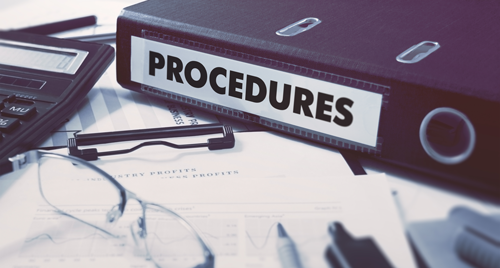Documentation key to a good Safety Management System
The key to a good safety management system (SMS) is efficient, well laid-out documents that help staff do their job. Each document should have a purpose and be easily accessible to those who need to use it.
The essential document types in a Safety Management System are procedures, registers, schedules, logs & other records, and forms. Health & safety procedures and registers are perhaps the most difficult documentation, so I will focus my attention on these.
Health & safety procedures
Health & safety procedures are controlled documents that provide a clear sequence of actions to maintain one aspect of your Safety Management System.
Health & safety procedures should:
- clearly define processes for complying with each legal requirement of ISO 45001,
- be well-written using an active voice,
- provide a clear work-flow that’s easy to follow, and
- only contain detail that’s necessary.
For more tips on how to write effective health & safety procedures, read my post – Creating effective system procedures.

Health & safety registers
Health & safety registers are structured lists of data that can change over time, and are used in conjunction with one or more health & safety procedures. Health & safety registers support the procedures by recording output data or by providing a checklist for use in the procedure.
For example, the Safety Hazards Register is used to record the safety hazards and other information “discovered” in the procedure covering section 6.1.2 of ISO 45001. The register is then used as a checklist, for example, in determining the organisation’s legal requirements (in section 6.1.3).
While restricting write-access to registers is important, they should not be “controlled documents” in the formal sense because changes will be made fairly frequently and formal approval for these changes is not required.
Health & safety registers can be used to store the following information (each in its own register):
- Safety hazards and risks: including risk assessment outcomes and controls
- Interested parties: including their needs and expectations
- Safety objectives: including targets, indicators and improvement programmes
- Emergency situations: including workplace/occupational safety impacts, controls, emergency procedures
- SMS documents and records: including location and responsibilities
- SMS roles, responsibilities and competencies: if not included in role descriptions
- SMS implementation issues: to capture SMS issues, concerns, improvement ideas for later consideration.

Safety management system schedules, logs & records and forms
Schedules in a safety management system are essential for managing all reoccurring actions needed within the safety system, such as audits, reviews and training.
SMS logs and records are notes which identify when an action was completed, with the details of what was considered and the outcome of the task. This information can be used to fulfil a ISO 45001 legal requirement or as audit evidence.
Forms are used within health & safety procedures for the efficient creation of records or documents. Forms should only request information that is needed, and they should be easy to understand and fill out.
Looking to improve your safety management system’s documentation?
Our Safety Management System documentation package includes safety system documents and templates to help you achieve conformance success.
Designed and used by our expert safety consultants, the package includes:
- A SMS Implementation Guide taking you through all the necessary steps to implement an SMS that conforms to ISO 45001:2018 requirements.
- 16 x procedures providing a step-by-step process for maintaining your ISO 45001:2018 requirements.
- 9 x register templates to record important information highlighted in the procedures.
- 3 x schedules and 3 x logs assisting with setting and tracking periodic tasks in relation to SMS maintenance.